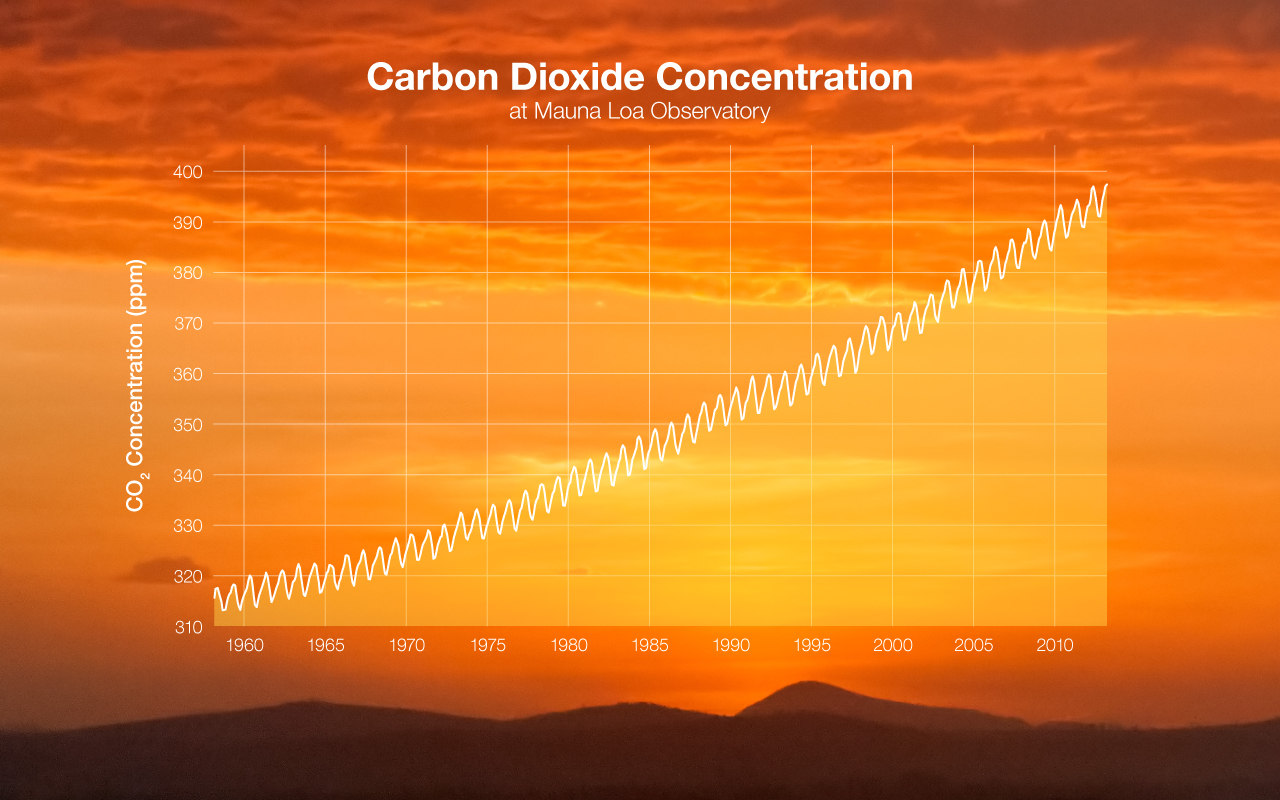The scientific method is the gold standard for exploring our natural world. You might have learned about it in grade school, but here’s a quick reminder: It’s the process that scientists use to understand everything from animal behavior to the forces that shape our planet—including climate change.
“The way science works is that I go out and study something, and maybe I collect data or write equations, or I run a big computer program,” said Josh Willis, principal investigator of NASA’s Oceans Melting Greenland (OMG) mission and oceanographer at NASA’s Jet Propulsion Laboratory. “And I use it to learn something about how the world works.”
Using the scientific method, scientists have shown that humans are extremely likely the dominant cause of today’s climate change. The story goes back to the late 1800s, but in 1958, for example, Charles Keeling of the Mauna Loa Observatory in Waimea, Hawaii, started taking meticulous measurements of carbon dioxide (CO2) in the atmosphere, showing the first significant evidence of rapidly rising CO2 levels and producing the Keeling Curve climate scientists know today.
“The way science works is that I go out and study something, and maybe I collect data or write equations, or I run a big computer program, and I use it to learn something about how the world works.”
Since then, thousands of peer-reviewed scientific papers have come to the same conclusion about climate change, telling us that human activities emit greenhouse gases into the atmosphere, raising Earth’s average temperature and bringing a range of consequences to our ecosystems.
“The weight of all of this information taken together points to the single consistent fact that humans and our activity are warming the planet,” Willis said.
The scientific method’s steps
The exact steps of the scientific method can vary by discipline, but since we have only one Earth (and no “test” Earth), climate scientists follow a few general guidelines to better understand carbon dioxide levels, sea level rise, global temperature and more.
- Form a hypothesis (a statement that an experiment can test)
- Make observations (conduct experiments and gather data)
- Analyze and interpret the data
- Draw conclusions
- Publish results that can be validated with further experiments (rinse and repeat)
As you can see, the scientific method is iterative (repetitive), meaning that climate scientists are constantly making new discoveries about the world based on the building blocks of scientific knowledge.
“The weight of all of this information taken together points to the single consistent fact that humans and our activity are warming the planet."
The scientific method at work
How does the scientific method work in the real world of climate science? Let’s take NASA’s Oceans Melting Greenland (OMG) campaign, a multi-year survey of Greenland’s ice melt that’s paving the way for improved sea level rise estimates, as an example.
- Form a hypothesis
OMG hypothesizes that the oceans are playing a major role in Greenland ice loss. - Make observations
Over a five-year period, OMG will survey Greenland by air and ship to collect ocean temperature and salinity (saltiness) data and take ice thinning measurements to help climate scientists better understand how the ice and warming ocean interact with each other. OMG will also collect data on the sea floor’s shape and depth, which determines how much warm water can reach any given glacier. - Analyze and interpret data
As the OMG crew and scientists collect data around 27,000 miles (over 43,000 kilometers) of Greenland coastline over that five-year period, each year scientists will analyze the data to see how much the oceans warmed or cooled and how the ice changed in response. - Draw conclusions
In one OMG study, scientists discovered that many Greenland glaciers extend deeper (some around 1,000 feet, or about 300 meters) beneath the ocean’s surface than once thought, making them quite vulnerable to the warming ocean. They also discovered that Greenland’s west coast is generally more vulnerable than its east coast. - Publish results
Scientists like Willis write up the results, send in the paper for peer review (a process in which other experts in the field anonymously critique the submission), and then those peers determine whether the information is correct and valuable enough to be published in an academic journal, such as Nature or Earth and Planetary Science Letters. Then it becomes another contribution to the well-substantiated body of climate change knowledge, which evolves and grows stronger as scientists gather and confirm more evidence. Other scientists can take that information further by conducting their own studies to better understand sea level rise.
All in all, the scientific method is “a way of going from observations to answers,” NASA terrestrial ecosystem scientist Erika Podest, based at JPL, said. It adds clarity to our way of thinking and shows that scientific knowledge is always evolving.






